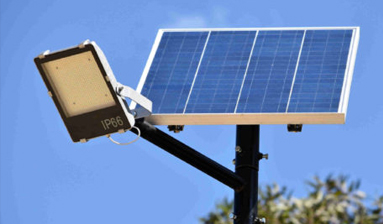

With regard to solar energy, this has already happened. […]
With regard to solar energy, this has already happened. China now has two-thirds of the world's solar capacity. The efficiency of its products in converting sunlight into electricity is getting closer to panels produced by companies in the United States, Germany and South Korea. Since China has also purchased half of the world's new solar panels, it actually controls the market now.
For most of the past century, the ups and downs of the US economy may determine the employment or poverty of Chilean copper mine workers or Malaysian rubber farmers. Now China's policy changes and business decisions may also have this global impact once brought by power intermediaries in Washington, New York, and Detroit.
The story of the rise of solar panels in China shows the serious trouble this country poses to Trump or any American president. Its scale and rapidly developing economy allow it to quickly redefine various industries. Under the leadership of the government, it pursues its dominance in key industries, which poses a direct challenge for countries where leaders usually let companies make business decisions themselves.
China is already the world's largest manufacturer and buyer of steel, cars and smartphones. Although it does not necessarily dominate these industries, its government departments are replicating success in the fields of robotics, chips, and software-as in solar energy.
Chinese solar panel manufacturers "have capital, technology, and scale," said Ocean Yuan, CEO of Grape Solar, a solar panel distributor in Eugene, Oregon. As for American competitors, he said: "They will defeat them."
Before becoming one of the most powerful players in the solar industry, Liu Hanyuan raised fish for a living.
Liu Hanyuan was born in a peasant family in the poor southwestern part of China. In 1983, he sold several pigs raised in his home in exchange for cash of about US$100 at the time and bought some fish. He soon entered the more profitable fish feed sales industry and eventually entered the pig feed and duck feed industries. His brand name "Keli" comes from the first and last words of "science and technology is the first productive force", which is the famous interpretation of Karl Marx theory by Deng Xiaoping, the father of modern China.
According to the authorized biography of Liu Hanyuan, at first he was criticized locally for accepting capitalism early. He responded that his fish feed was an improved product following Deng Xiaoping Theory. "Wait for development," he said at the time, "I'm going to add another layer to the laboratory."
Efforts to switch to the computer chip industry were unsuccessful, so by 2006, he turned to solar technology and controlled a company that produced chemical raw materials for the manufacture of polycrystalline silicon, which is a crystalline raw material that makes up solar panels. This move proved to be lucky: At that time, China was carrying out all-round cooperation and was committed to becoming a solar power country.
Over the next six years, Beijing pushed state-owned banks to provide at least US$18 billion in loans to solar panel manufacturers at low interest rates, and encouraged local governments to finance these manufacturers with cheap land. China hopes not only to dominate solar energy exports: it has serious pollution problems, but also fears that sea level rise caused by climate change may damage many coastal cities, so there is an urgent need to develop green technologies. At the same time, China has become a major player in wind power through similar policies.
With such a large amount of assistance, from 2007 to 2012, China's solar power generation has increased more than ten times. Six of the world's top ten solar panel manufacturers come from China, including the top two. You know, there is no Chinese company among the top ten manufacturers ten years ago. Tongwei Group, the solar branch of Liu Hanyuan Company, rarely discloses financial details. It is one of the fastest growing companies in the industry.
This growth has forced many solar panel manufacturers in the US and Europe to rush back. During President Barack Obama’s first term, dozens of solar panel manufacturers filed for bankruptcy or business cutbacks, which dampened people’s fanatical optimism about clean energy.
In 2012 and 2013, the United States and the European Union believed that Chinese solar panel manufacturers received government subsidies to dump solar panels, that is, sold at a price lower than production and transportation costs. Both have imposed import restrictions. Chinese manufacturers and officials have denied improper subsidies and dumping, and are still doing so.
Several large Chinese manufacturers that over-expanded and suffered severe losses for many years later went bankrupt. However, Western Solar said that despite the low loan recovery rate of large Chinese solar companies with debt defaults such as Suntech, Chaori and Saiwei LDK, Chinese banks still issued large amounts of loans to surviving companies.
